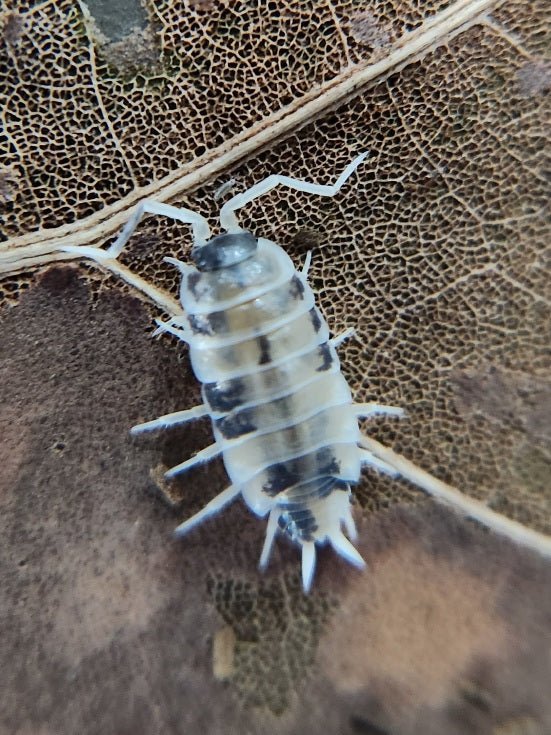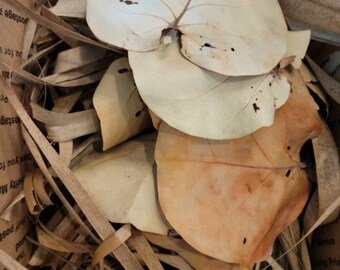When setting up your isopod bin or bioactive enclosure, leaves are a necessary item for isopod health and survival. Isopods consume leaves as a main part of their diet. Other foods such as vegetable scraps, bee pollen, fish food, dried minnows, dried mealworms, et cetera, are supplemental foods we offer in small quantities to our isopods.
There can never be too many leaves for isopods. Make sure their habitat has layers of leaves. At a very minimum, make sure there are enough leaves that you cannot see the soil or substrate in the enclosure. If you can provide a variety of leaves, that's even better! Leaves from hardwood trees work the best, but there are many plant leaves as well that are safe for isopods. Pine should not be utilized with isopods as the sap can cause issues. Examples of the types of leaves used with isopods are magnolia, maple, oak, sea grape, palm leaves, aspen, and cottonwood. There are many others, so just do a quick search or reach out to us if you are in doubt about whether the leaves are safe.
Leaves do not need to be boiled, baked, or "sanitized." Those methods remove all of the good bacteria on the leaves that the isopods require, and baking the leaves can be a fire hazard. It is perfectly fine to collect leaves from an area without pesticides and place them directly in with your isopods. If you are concerned about the possibility of spiders, mites, or other types of leaf "pests," you could freeze the leaves for three days, rinse the leaves with water, or sun bake the leaves. We all live in different climates, so you have to what works best for you.
Any questions, send us a message!



